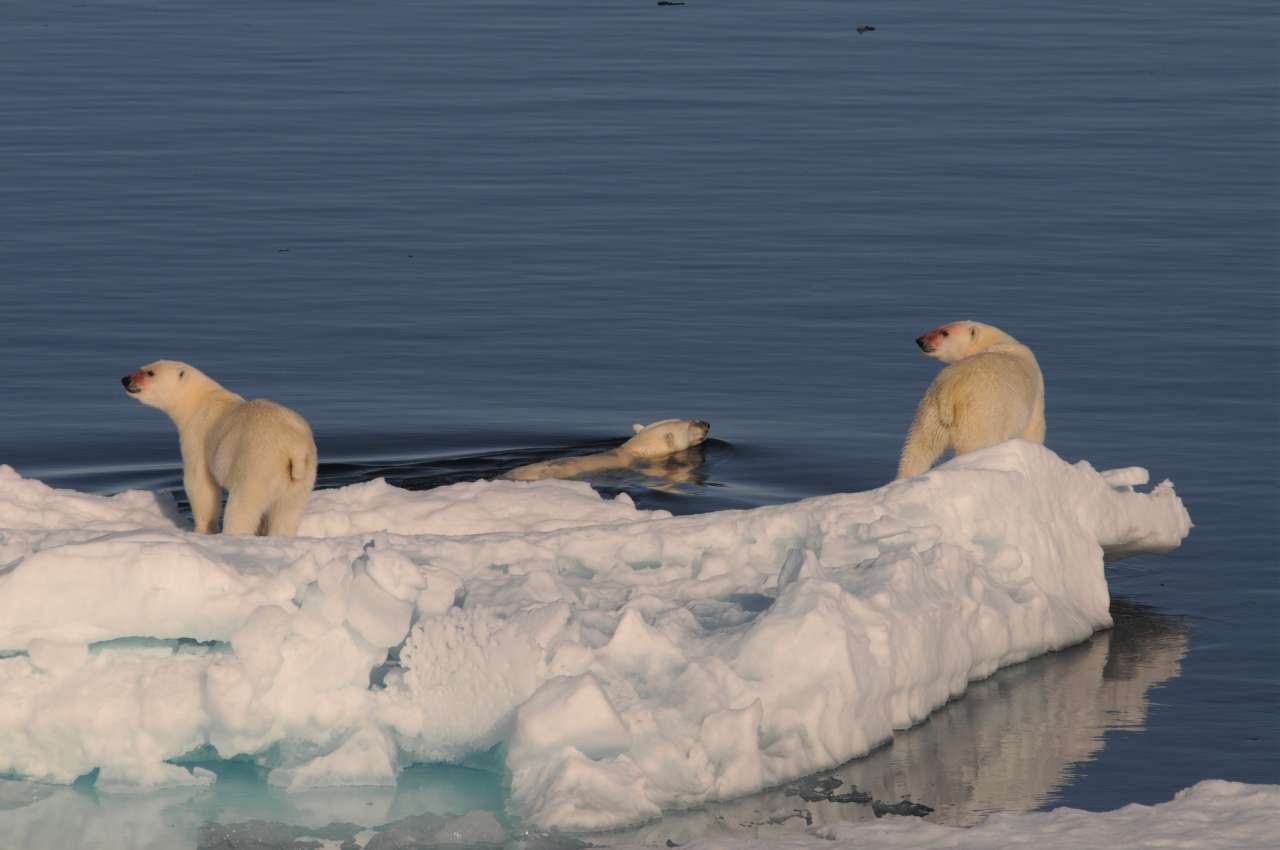The polar bear’s destiny when the ice recedes

Photo: Morten Günther
Over several decades, sea ice has gradually been receding from the areas around Svalbard. New research shows that this has led to loss of genetic diversity and an increasing degree of isolation in the local polar bear population.
Although the polar bear is a good swimmer, it depends on sea ice for hunting, eating and resting.
“The polar bear spends most of its life on sea ice,” says Snorre Hagen, head of research at NIBIO Svanhovd. In collaboration with the Norwegian Polar Institute, NIBIO has investigated how the genetic diversity of the polar bear population around Svalbard has changed in recent years.
Extensive DNA analyses
Researchers have analysed the DNA of 626 polar bears. The samples were collected by the Norwegian Polar Institute in the 1995–2016 period, from four different locations on Svalbard.
The results show that the genetic diversity of the polar bears on Svalbard was reduced by 3–10 percent during the study period. In addition, the researchers found an increase of almost 200 percent in genetic differentiation across regions, as well as an increase in the average genetic relationship between individuals.
“In other words, we can say that the polar bears across the entire area are becoming more and more genetically similar, while the polar bears in each individual area are becoming increasingly genetically isolated from one another,” says Hagen.
Sea ice is receding
These effects are best explained by the fact that the polar bear’s habitat is being divided into smaller and smaller fragments, while the ice-free season is growing longer.
“When the sea ice disappears, the polar bears become less mobile. This leads to the bears becoming more similar to one another on a local level, and the local gene pool grows smaller as the polar bears in a given location increasingly mate with polar bears from the same area,” Hagen concludes.
Contacts

Contacts

Publications
Authors
Simo Maduna Jon Aars Ida Marie Luna Fløystad Cornelya Klutsch Eve Marie Louise Zeyl Fiskebeck Øystein Wiig Dorothee Ehrich Magnus Andersen Lutz Bachmann Andrew E. Derocher Tommi Nyman Hans Geir Eiken Snorre HagenAbstract
No abstract has been registered
